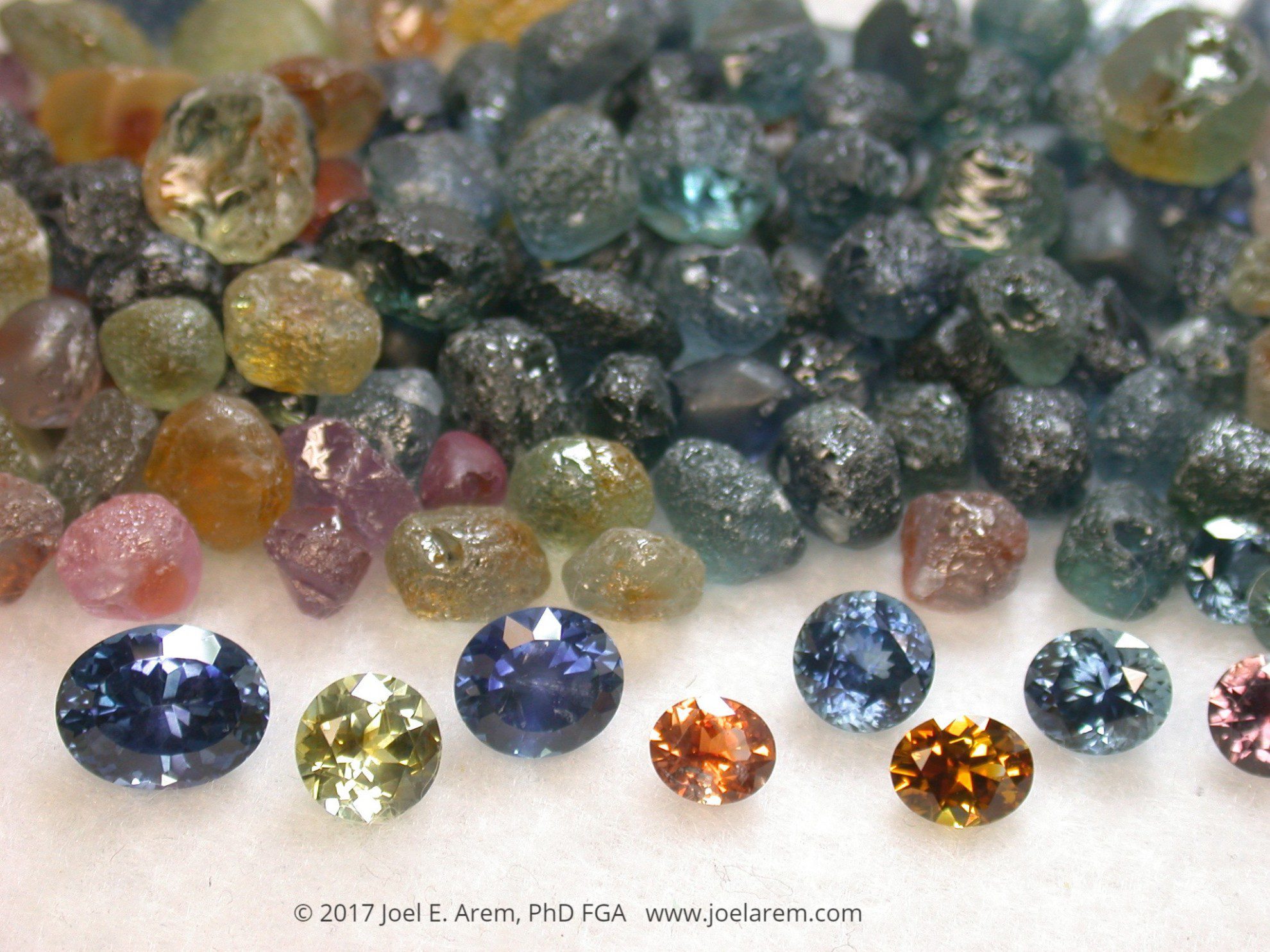What are the Best Rough Sapphire Stones?
The best rough sapphire stones may come from different sources, depending on the color you want. However, valuable blues may pose some faceting challenges.
1 Minute Read
Answer: That's a big question. However, here are some quick comments.
Blue Sapphires
If you're looking for blue, rough sapphire stones from Montana are usually "steely," meaning they have a gray tone to them. That's why they usually cost less than other blue sapphires, since their value comes primarily from the purity of their color.
The term "cornflower blue" is greatly over used. If you're a gardener, you know what the color refers to. Otherwise, I would best describe it as the deepest blue in a clear sky. This is the most valued color in sapphire. Lighter stones lose value quickly, deeper blues less so. Deep, royal blue gems are quite valuable, until they get too dark.
As a general rule, the best blue rough sapphire stones come from south and southeast Asia, although those from Africa sometimes have pretty high quality.
Fancy Colored Sapphires
For fancy colored sapphires, no one location stands out. Here, value has more to do with personal preference, as just about all shades of color are available and worth about the same. Hot pink sapphire, which is in high demand, is an exception.
Dichroism and Color Zoning in Rough Sapphire
If you get blue sapphires for faceting, you'll find the color isn't usually consistent all the way through. Dichroism, with one direction green, is common. Those gems must be oriented for color, regardless of the yield. Most sapphire stones also show unintentional color zoning, for which you'll need to account. It takes a lot of experience to adjust for both dichroism and zoning.
I cut one exceptionally satisfying sapphire. It was a Montana gem with a very fine, deep royal blue spot, not more than 2 mm in diameter. I managed to place that spot in the culet, and the gem was both richly colored and lively. In most deep blue gems, the color absorbs the light, so they aren't very lively. Since this gem was mostly colorless, it had great sparkle in relationship to the color. That's a good trick that you may be able to apply to a few sapphire stones that cross your path.
Donald Clark, CSM IMG
International Gem Society
Related Articles
Sapphire Value, Price, and Jewelry Information
Mermaid Sapphires: the Next Big Thing in Engagement Ring Stones
What are Lab-Grown Sapphires?
Tips for Polishing Synthetic Corundum
Latest Articles
800 Years of Mogok: A Celebration in Tenuous Times
What is the Average Gemstone Faceting Yield?
Pyroxmangite Value, Price, and Jewelry Information
How to Identify Emerald Simulants and Synthetics
Never Stop Learning
When you join the IGS community, you get trusted diamond & gemstone information when you need it.
Get Gemology Insights
Get started with the International Gem Society’s free guide to gemstone identification. Join our weekly newsletter & get a free copy of the Gem ID Checklist!
